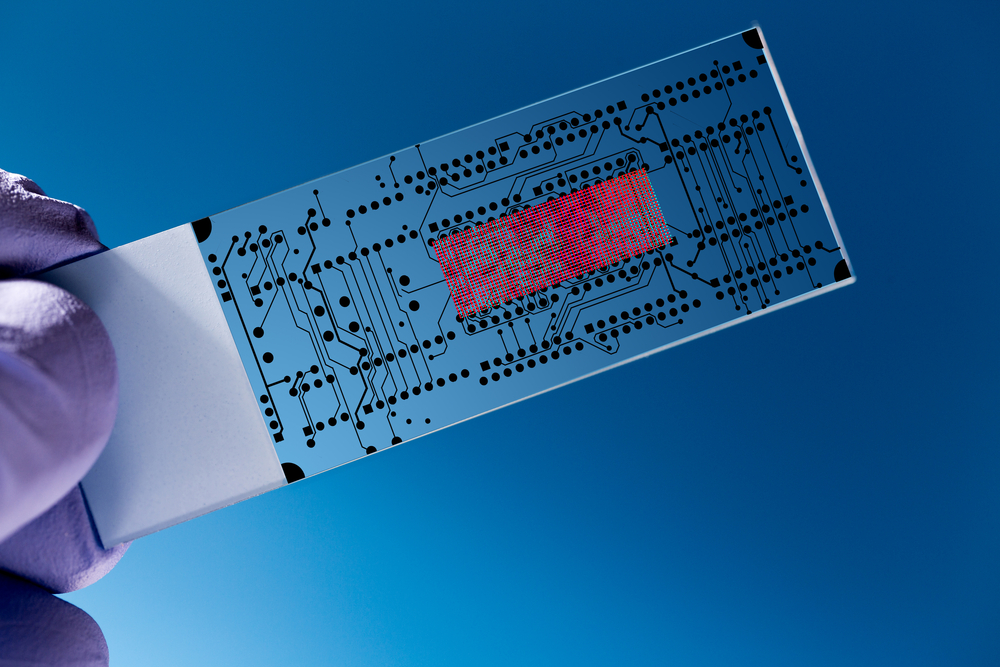Novel Strategy Holds Implications For Future Effective Brain Implants

In a recently published paper in ACS Applied Materials and Interfaces journal entitled “Support of Neuronal Growth Over Glial Growth and Guidance of Optic Nerve Axons by Vertical Nanowire Arrays“, researchers from Lund University in Sweden developed a strategy to grow neuronal cells on vertical nanowires where the cells can grow and thrive.
Neurological disorders are characterized by impairment in functioning of the central nervous system. Examples of diseases that are related neurological disorders include Alzheimer, Parkinson, amyotrophic lateral sclerosis, ataxia, dementia, and epilepsy, among others. Patients with neurological disorders may suffer from various symptoms such as paralysis, muscle weakness, poor coordination, confusion, loss of sensation, seizures, memory impairment, pain and altered levels of consciousness.
Though the causes of neurological disorders are not fully understood and still intensively investigated, evidence collected to date indicate that they may vary from one condition to another. Examples include genetic disorders, infections, congenital abnormalities, lifestyle and environmental health factors like injuries (brain, spinal cord, nerves), and malnutrition. The World Health Organization estimated that neurological disorders affect around one billion people worldwide and highlighted that patients with neurological disorders often suffer from health inequalities and social discriminations.
From the therapeutic viewpoint, neurological disorders could be managed by means of preventative measures, lifestyle changes, neurorehabilitation, physiotherapy, pain management methods, medication, and surgery. One recent promising avenue to treat neurological diseases is the implant of electrodes in the brain tissue (so called, brain implants or neuro-prostheses) in order to stimulate and capture signals within areas of the brain. Yet, these implants are associated with several drawbacks including rejection where the immune system of the body recognizes it as foreign object and mounts an attack to remove it. This results in encapsulation of the implant in layers of tissue created by growing cells called glial cells (non-neuronal cells that provide support and protection for neurons), leading to loss of signal and functionally of the implant.
To prevent this phenomenon the research team developed tiny substrates using the semiconductor material gallium phosphide to manufacture outgrowing vertical nanowires with diameters of about 80 nanometers (billionths of a meter). The nanowires displayed super thin regions combined with flat regions to separate distinct neuronal and glial cells. Afterwards, the researchers performed cell cultures in vitro, observing that cells grow primarily on the flat regions and in between the nanowires. The letter is important because it allows different types of cells to interact with each other and glial cells to provide neuronal cells with appropriate conditions to survive.
“Our nanowire structure prevents the cells that usually encapsulate the electrodes — glial cells — from doing so,” said Christelle Prinz, researcher in Nanophysics at Lund University in Sweden, who developed this technique together with Maria Thereza Perez, a researcher in Ophthalmology. “I was very pleasantly surprised by these results. In previous in-vitro experiments, the glial cells usually attach strongly to the electrodes,” she added.
These findings suggest the possibility to manufacture substrates for interfacing neurons of the central nervous system using vertical nanowires in a way that neuronal and glial cells are kept close but in separate compartments to benefit each other. In the future, the researchers plan to investigate whether these nanowires could be utilized in central nervous system implants to reduce encapsulation by glial cell and improve biocompatibility of the implants.






